|
|
Reviewed by Glenn Erickson
Last October Savant reviewed a Kino Classics double bill of Black Sunday and Black Sabbath, in their original U.S. versions as released by American-International Pictures in 1961 and 1963. The release was canceled almost before the screener arrived, reportedly due to unforeseen 'contractual issues'. Black Sabbath is expected later in the year, but Kino Classics finally now has a single of just Black Sunday out, in glorious B&W.
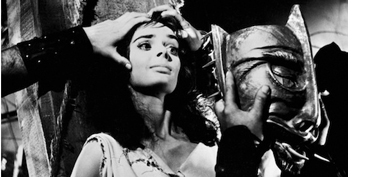
For the last sixteen years or so the film that launched Mario Bava as a director and Barbara Steele as the horror queen of the 1960s has mostly been seen in an 'in-between' form, as the export version The Mask of Satan. I first wrote about it in an MGM Video Savant essay from 1998 called Censorship for a celebrated Horror Film, using censor correspondence found in the files at MGM. Thanks to interest in Tim Lucas' original commentary, and through the help of then- Image Entertainment staffer Nathaniel Thompson, I reviewed the first Black Sunday DVD in 1999. Reissues eventually followed: Anchor Bay in 2007, Kino in 2012 (Blu-ray).
Let me refer readers to my review of last October's cancelled combo Blu-ray of Black Sunday and Black Sabbath for the basic details and differences in the European and A.I.P. cuts of Bava's great La maschera del demonio. Because Les Baxter's more aggressive and emphatic music score is how I saw the film before the advent of DVD, I have to say that this is for me the better version of the two. The obvious way to improve things would be to marry the uncut European version with the American audio track. Not only would the visuals be of a slightly better quality, we'd also get the extra footage of romantic material and the bits of gore scattered here and there.
Of course, if we want to get really radical with film history, someone could hire Ms. Steele to dub her entire part and produce a full new audio track, with Les Baxter's music, new voices and a fantastic new set of sound effects. I'm sure I'd love it for the first three viewings... and then wonder where Paul Frees went. 1
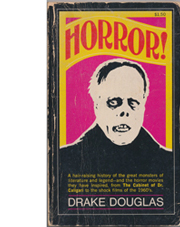
What a great opportunity for an unsolicited personal indulgence... if you discovered Mario Bava in the 1990s, there's a small chance you might like to know how we older fans discovered him in eons past. If not, check out the earlier review or skip on down to the quality notes below.
I missed the film's 1961 release entirely, and with the exception of a photo or two in Famous Monsters of Filmland, really wasn't aware of the existence of Black Sunday until Drake Douglas's 1966 book Horror! It offers a fairly poetic overview of basic movie monsters and as an extra benefit introduced me to the authors E. A. Poe, H.P. Lovecraft and Arthur Machen. Douglas never mentions Bava or Steele by name but devotes three pages to waxing enthusiastic on the film's photography and atmosphere.
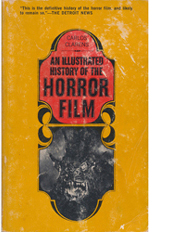 Douglas might have found a friend with critic Tom Weaver -- he praises some of the Hammer films but overall judges them "lacking in story content and true atmospheric horror." Not long after that I was introduced to the books of Carlos Clarens and Ivan Butler, who devoted ample space to Black Sunday, even if Mario Bava remained something of an unknown quantity. I believe that in some cases the writers may have been thrown by the director's various nom de films - nobody had assembled anything like a chronology of his work. For me the big legit recognition event came came courtesy of critic Raymond Durgnat, in his superb film book Films and Feelings. He approached Euro-horror from the Barbara Steele angle, putting her on the same erotic-Goddess pedestal as Kim Novak. Durgnat's eclecticism influenced my attitude toward movie analysis even more than did the Truffaut-Hitchcock book, the one that most of us clutched as we entered film school. Durgnat even laced his thoughts on The Bride of Frankenstein with wickedly appropriate off-color humor.
Douglas might have found a friend with critic Tom Weaver -- he praises some of the Hammer films but overall judges them "lacking in story content and true atmospheric horror." Not long after that I was introduced to the books of Carlos Clarens and Ivan Butler, who devoted ample space to Black Sunday, even if Mario Bava remained something of an unknown quantity. I believe that in some cases the writers may have been thrown by the director's various nom de films - nobody had assembled anything like a chronology of his work. For me the big legit recognition event came came courtesy of critic Raymond Durgnat, in his superb film book Films and Feelings. He approached Euro-horror from the Barbara Steele angle, putting her on the same erotic-Goddess pedestal as Kim Novak. Durgnat's eclecticism influenced my attitude toward movie analysis even more than did the Truffaut-Hitchcock book, the one that most of us clutched as we entered film school. Durgnat even laced his thoughts on The Bride of Frankenstein with wickedly appropriate off-color humor.
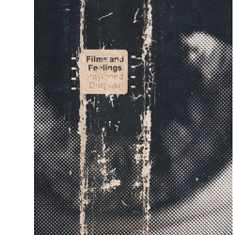
At UCLA I was able to rent movies for the dorm crowds, taking over from Randy Cook. He showed us Psycho and Touch of Evil, whereas my big draw for Halloween 1971 was a triple bill: 'Scope 16mm prints of Blood and Roses and The Fearless Vampire Killers from Films Incorporated; and from Audio Brandon, Black Sunday. I'd never seen it before. The crowd liked the first film, loved the second, and Black Sunday had people jumping out of their seats. It was even more violent than Horror of Dracula, the previous year's Halloween treat. By that time I was into Danger: Diabolik and Black Sabbath, had scratched my head at the incomprehensible What! on a tiny B&W TV. From friend Robert S. Birchard, I bought a bleary B&W 16mm print of Riccardo Freda's The Horrible Dr. Hichcock.
This was when I went to work in the UCLA's Theater Arts Reading room, a job that slowly supplanted my other part-time jobs in Westwood, working on a parking lot and then ushering at the Mann's National Theater. My co-workers Roger Nadelman and James Ursini were great friends, showing me the library's special resources. The place had an original King Kong souvenir premiere booklet, the one with the cover made of thin metal, the color of brass. A big rack of screenplays in the back had both final draft and continuity scripts for hundreds of films -- which is where I first became aware of the continuity discrepancy at the end of Kiss Me Deadly. James Ursini was my intellectual film connection
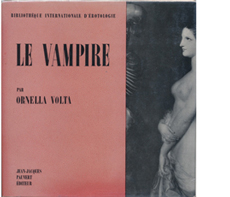 at UCLA. We once stopped and talked to John Houseman, who was doing his own research. Jim had been published and was just starting a writing association with Alain Silver, who had been his close friend from Jesuit school forward. Jim read French and Italian and had studied horror in European literature. He could translate arcane text passages from Ornella Volta's book Le Vampire, which was kept safely tucked away alongside Le Duc's pre-Hollywood Babylon coffee table sensation L'Erotisme au Cinema. Jim and Alain were big horror fans. Around this time they wrote the first English language overview of Mario Bava for the highly regarded Photon magazine. It was a pleasant association. We checked out Japanese samurai films together, and he loaned me issues of Midi-minuit Fantastique. As an editor I cut instructional films for Jim Ursini, and eventually two horror features for Alain Silver.
at UCLA. We once stopped and talked to John Houseman, who was doing his own research. Jim had been published and was just starting a writing association with Alain Silver, who had been his close friend from Jesuit school forward. Jim read French and Italian and had studied horror in European literature. He could translate arcane text passages from Ornella Volta's book Le Vampire, which was kept safely tucked away alongside Le Duc's pre-Hollywood Babylon coffee table sensation L'Erotisme au Cinema. Jim and Alain were big horror fans. Around this time they wrote the first English language overview of Mario Bava for the highly regarded Photon magazine. It was a pleasant association. We checked out Japanese samurai films together, and he loaned me issues of Midi-minuit Fantastique. As an editor I cut instructional films for Jim Ursini, and eventually two horror features for Alain Silver.
Alain Silver later started his own CD music label Bay Cities, and released the Les Baxter soundtrack for Black Sunday. Then a European cut of Black Sunday appeared on VHS, that gave us the opportunity to hear Roberto Nicolosi's original music bed, which made zero impact compared to Les Baxters' barnstorming score. But the film's additional scenes and little added shots of gore surprised us. Instead of fading to black for three or four seconds when the pock-faced Witch Asa kisses Dr. Kruvajan, the shot held on the kiss. Incredible.
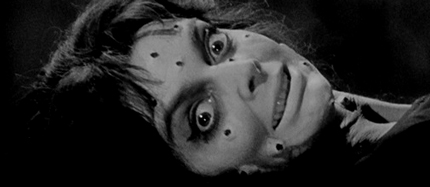
It was a different time, before the internet and DVD. Even when VHS home video came in, I don't remember prime Euro-horror films becoming available; I didn't see a decent color copy of The Horrible Dr. Hichcock until 2006, even though my article on it was published in 2000. I had seen Black Sunday only once on L.A. television in all that time, and grabbed at the Image laserdisc that was issued in 1995 or so. More synchronicity: in 1991 I became the chief editor for MGM Home Video, and thus was on hand when that company absorbed the Orion and A.I.P. film libraries. When the MGM film restoration people began working on the A.I.P. titles, I had access to exact details on how they were finding uncut versions and correct music tracks to titles like Witchfinder General and The Vampire Lovers. I couldn't speak out and say it at the time, but some of my early articles for MGM Video Savant were based on inside information from friends in the know.
Since 1991 I'd become an avid follower of Video Watchdog, the magazine that of course opened up the informational floodgates on Bava, Euro-horror and the entire spectrum of fantastic film, replacing rumors and ignorance with hard fact. Mario Bava and Dario Argento became cultural superstars, at least among the college-aged kids heavily into DVD in the years 1998 to about 2004. Now.... I'm not sure. We grew up in an informational desert, insofar as cult movies were concerned. It's now possible for anyone with a computer to learn most every detail of every weird picture ever made. We were equally fanatic in the 1970s, but sometimes my 'knowledge' was based on vague memories and hand-me-down stories. Jim Ursini once drove to Bakersfield to catch a Technicolor print of The Horrible Dr. Hichcock on a drive-in screen. I once waited in a downtown
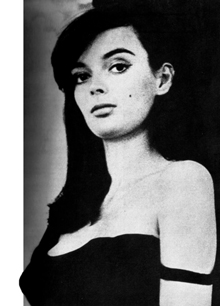 L.A. grindhouse for six hours to see Messiah of Evil, only to discover that the manager skipped its place in rotation with three Santo features.
L.A. grindhouse for six hours to see Messiah of Evil, only to discover that the manager skipped its place in rotation with three Santo features.
Back in 1980, the Los Angeles Film Exposition (FILMEX) mounted a gala horror marathon at the now defunct Fairfax Theater on Beverly Blvd., the kind of blissful ordeal that lasted two or three days, with people sleeping in the aisles. As I had written several entries for the screening booklet, I used my pass to attend an afternoon screening of Eyes Without a Face, my first viewing of the full French version. I was too tired to stay for the premiere of Joe Dante's The Howling, which I'll always regret. One reason for that was that earlier that morning I'd gotten up at 7 a.m. to catch Black Sunday in 35mm. It's the only time I've seen it on a big screen, in an original A.I.P. print. It looked incredibly good. When the spectral coach glided through the mist in slow motion, we felt we were watching a horror fairy tale. I knew that it must have been an original print because the end title sequence included an extra credit card urging patrons to watch for A.I.P.'s next horror offering, The Two Faces of Dr. Jekyll. I've always tried to distance myself from the kind of film fanatic that remembers information like that... when that's exactly what I am myself.
The Kino Classics Blu-ray of the U.S. Release Version of Black Sunday was taken from A.I.P.'s original printing elements, which are a film generation or two away from the source used for the European version. It is quite acceptable yet has less contrast and definition. One does have to see them side-by-side to tell.
The lone extra is a set of trailers for other Bava pictures, seen before on other discs. Black Sunday is a really rough dupe of the A.I.P. coming attraction reel. Bay of Blood is the 'Carnage' trailer, the one with all the solarized color tricks. Baron Blood is a good-looking A.I.P. cut, while all I can say about Hatchet for the Honeymoon is that it is in English yet looks European. Lisa and the Devil is the familiar reel with the high female vocal, almost surely Edda Dell'Orso. Finally, the Whip and the Body trailer is the same blurry French video copy seen on Kino's disc of that title.
Black Sabbath has been slated for later in the year; which will give Kino a chance to correct a sync issue on the aborted release of last October. If you haven't heard Black Sunday with its original Les Baxter music cranked to 8 or 9, you haven't seen it in all its glory.
On a scale of Excellent, Good, Fair, and Poor,
Black Sunday the U.S. Release Version Blu-ray rates:
Movies: Excellent
Video: Good +
Sound: Very Good
Supplements: Trailer Gallery
Deaf and Hearing Impaired Friendly?
N0; Subtitles: None
Packaging: One Blu-ray disc in Keep case
Reviewed: September 15, 2014
Footnotes:
1. Is it Paul Frees? I'm blanking in my effort to remember the voice of the Priest (and probably three other characters as well).
Return

Text © Copyright 2015 Glenn Erickson
See more exclusive reviews on the Savant Main Page.
Reviews on the Savant main site have additional credits information and are often updated and annotated with reader input and graphics.
T'was Ever Thus.
Return to Top of Page
|




